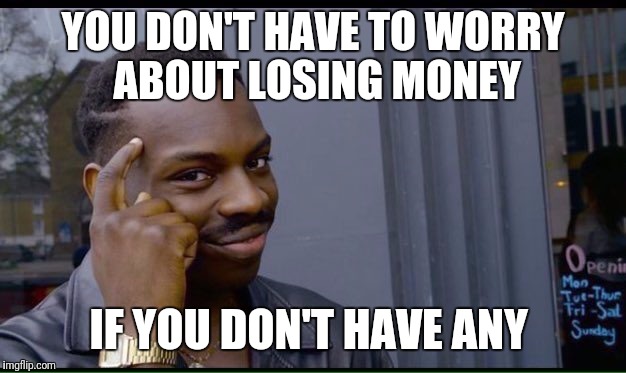

‘It’s Part and Parcel of Crypto’: How Memes Drive Narrative and Value
‘It’s Part and Parcel of Crypto’: How Memes Drive Narrative and Value
“YAMs = Ponzinomics of AMPL + Chad launch of YFI + Meme math of Tendies,” Messari analyst Ryan Watkins tweeted about the latest decentralized financial application to set crypto atwitter.
It’s the type of back of the napkin logic that looks like gibberish on its face, but has an internal cohesion that makes sense to insiders. Yams, chads and tendies.
“In this market, where there are so many different projects already fighting for attention and new ones launching everyday, it is important for projects to try and get people motivated to spend their time learning about THEIR project,” Anil Lulla, COO of Delphi Digital said over email. “Memes are an easy way to get a narrative around and perhaps the quickest way to get eyeballs.”
“A lot of these protocols have a lot of complex intricacies that are quite hard to grasp without doing a significant dive and researching the protocol for weeks (not hours or days),” he said.
That’s a level of attention that some of these projects can’t afford. Their memes die as quickly as they rise.
See also: Nathaniel Whittemore – ‘Stacking Sats’ vs. ‘ETH Is Money’ – The Memes That Shaped 2019
In what appears to be the beginning of another crypto bull market, a lot of attention is being directed at decentralized finance, or DeFi, and the permissionless financial experiments the ecosystem is driving. These memetic projects, inscrutable or absurd to a general audience, have rekindled a conversation about what crypto wants to be.
Memes are the lingua franca of the internet, performing as shorthand for complex phenomena. In the world of cryptocurrencies, memes hold particular sway. Like crypto, memes were born on the internet and have journeyed from the fringes to the mainstream. They’re used to drive adoption of cryptocurrency, signal bullishness or bearishness on certain assets or coins by traders and even boost the value of tokens. They are a part of the discourse, commemorate events, spur narratives about certain coins and even help people earn millions of dollars.
The term “meme” comes from Richard Dawkins’ 1976 book “The Selfish Gene.” He describes a meme as a behavior or idea that jumps from person to person within a culture.
“We are built as gene machines and cultured as meme machines,” he wrote, describing the idea that these cultural artifacts are a way to communicate ideas quickly to humans with a limited attention span.
See also: Is Bitcoin in 2020 Really Like the Early Internet?
The term, which was not originally intended to describe DeFi or “brr” money printers, was appropriated to describe cheeky online images. Not that Dawkins minded.
“When anybody talks about something going viral on the internet, that is exactly what a meme is and it looks as though the word has been appropriated for a subset of that,” Dawkins said in a 2013 interview. While memes are often associated with image macros accompanied by black and white text, any idea – be it represented as a .gif, text or video – that goes viral online can rightfully be called a meme, under Dawkins’ definition.
A less academic eye would probably see memes purely as jokes. Greta Thunberg earned a headline-grabbing reputation after her climate protest went viral; while her activism is memetic, it isn’t a meme. There’s a tension between the meme and how it functions. At once a viral bit of information, memes also create in-groups and out-groups between those who understand. In this sense, memes are a mirror of crypto, a tool for connecting the world that’s partially occluded by its technicality and what is sometimes called crypto’s “toxic community.”
Linda Xie, former product manager at Coinbase and now founder of the crypto investment fund Scalar Capital, dove deep into the links between memes and crypto after becoming interested in dogecoin, the first parody cryptocurrency to take off in a big way (it recently took off once more following some new TikTok videos).
“I’ve been really interested in memes in particular because I feel like it’s so important for getting crypto to have mainstream adoption and interest,” she said in a phone call. “Just having a really clear meme goes a lot further than people writing some incredibly long blog post.”
The adorable Shiba Inu, Doge, was first posted on a random blog in 2010, given an inner monologue on Tumblr in 2011, used by 4chan hordes to spam Reddit in 2013 and eventually became the namesake of a cryptoproject that same year.
See also: Nathaniel Whittemore – TikTok Let the Doge Out: Why TikTok Doge Is Everything About 2020 Finance in One Story
Although the project is an elaborate joke – it’s a fork of Luckycoin, which is a fork of Litecoin, which itself splintered from Bitcoin – it developed a serious community of users. People used it to tip each other for good content, and there was a good faith effort to rebrand as the people’s crypto, as opposed to the “elitist” bitcoin.
“I just liked the congenial atmosphere and the crowdfunding elements (the bobsled team, etc). It was entertaining and I could mine it on my laptop for a while, unlike bitcoin,” Nic Carter, co-founder of Castle Island Ventures and CoinDesk columnist, said over Telegram.
Joke or not, dogecoin now has a $421 million market cap. Xie said this represents how memes can shape reality. Just because you’re laughing doesn’t mean you don’t have skin in the game.
Seven years later, similarly bizarre concepts for crypto projects – some that advertise themselves as useless lines of code – are still able to attract millions of dollars worth of investments. YAM, PASTA and BASED are among the most recent.
To draw attention to the phenomenon, Consensys’ Jordan Lyall has created his own meme-DeFi project.
“Introducing The Degenerator,” he tweeted on Aug. 14. “Spin up a new #DeFi project in as little as 5 minutes!”
The idea pokes fun at the way that comically named DeFi projects like YAM and others were rapidly spinning up value.
The developer’s anti-meme joke took on a life of its own though, particularly when someone minted a meme coin called Degenerator, listed as $MEME on exchanges. Two weeks later, “Degenerator” was dropped, and the coin became just $MEME. It now has a market cap of more than $2 million and is listed on CoinGecko.
Lyall now tells people not to buy it. His warning “don’t buy $MEME” has become a staple in crypto Telegram circles, he said in a phone conversation.
There had already been infighting and a hard fork in the group, but what’s risen to the surface from the community is the launching of an actual protocol in which you stake $MEME for nonfungible tokens (NFT) of art created by meme artists. The project formally launches today.
“It’s a mix of YAM and CryptoKitties,” Lyall said.
See also: Deposits in ‘Monetary Experiment’ Meme Token YAM Break $460M
Lyall recognizes the whole thing has spiraled out of his control, and at this point he’s just watching to see what happens. Most people probably bought in the LOLs (laugh out loud) rather than the gain, he says.
But sometimes where the LOLs go online, the gains follow.
“I’m just extremely fascinated with how something so dumb, a Twitter joke and graphic that took me half an hour to design, really created $2 million in value in a couple of hours,” he said.
Such projects are self-referential protocols that make light of, while also exemplifying, the “monetary experiments” that decentralized finance (DeFi) enables. Sponsored by “degenerate traders,” they’re as much about making money as having fun, according to CoinDesk’s Will Foxley.
Not every meme-coin is jovial. CoronaCoin, launched in February, was a morbid experiment to tie financial success to death.
See also: SingularityNET, Ocean, Algorand, Triffic, Enigma Add To Fight Against Coronavirus
“People fixate on the wrapping, but the substance is really an opportunity to make a lot of money gambling,” Carter said. Absurdist on the face, these protocols leverage rock-solid “nakamoto schemes” and zero-sum games to create real financial opportunities, he said.
David Z. Morris, a reporter at Fortune and author of “Bitcoin is Magic: Internet Money, Memetic Warfare, and the End of Mere Reality,”said crypto memes are a window on market sentiment.
“Traders are dealing with short-term sentiment and meta information about how people are thinking right now,” said Morris. “So when you look at an interval of a couple of days at a time, a meme can have a lot of influence, particularly when it crosses over to somewhere like Twitter.”
-
-
-